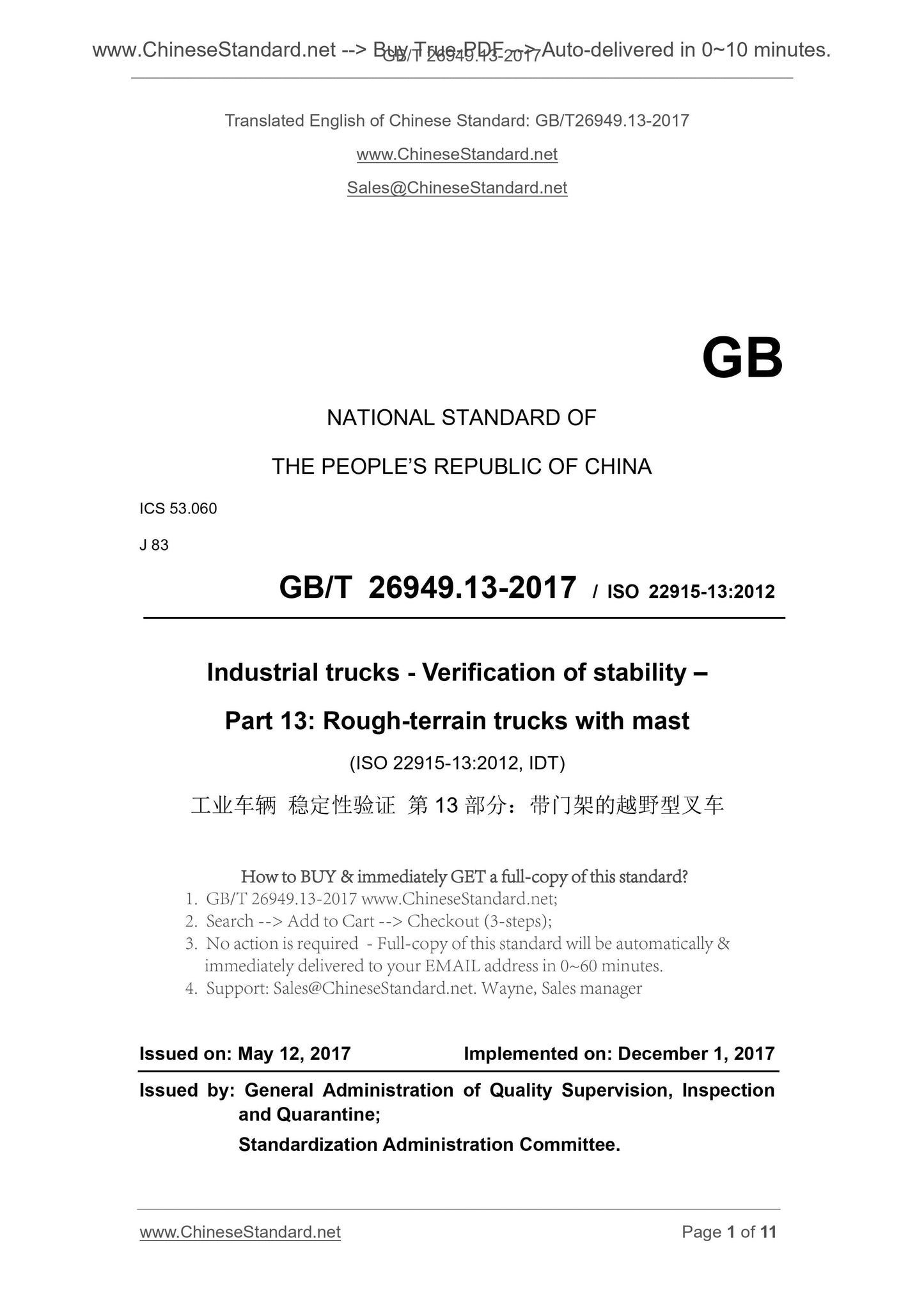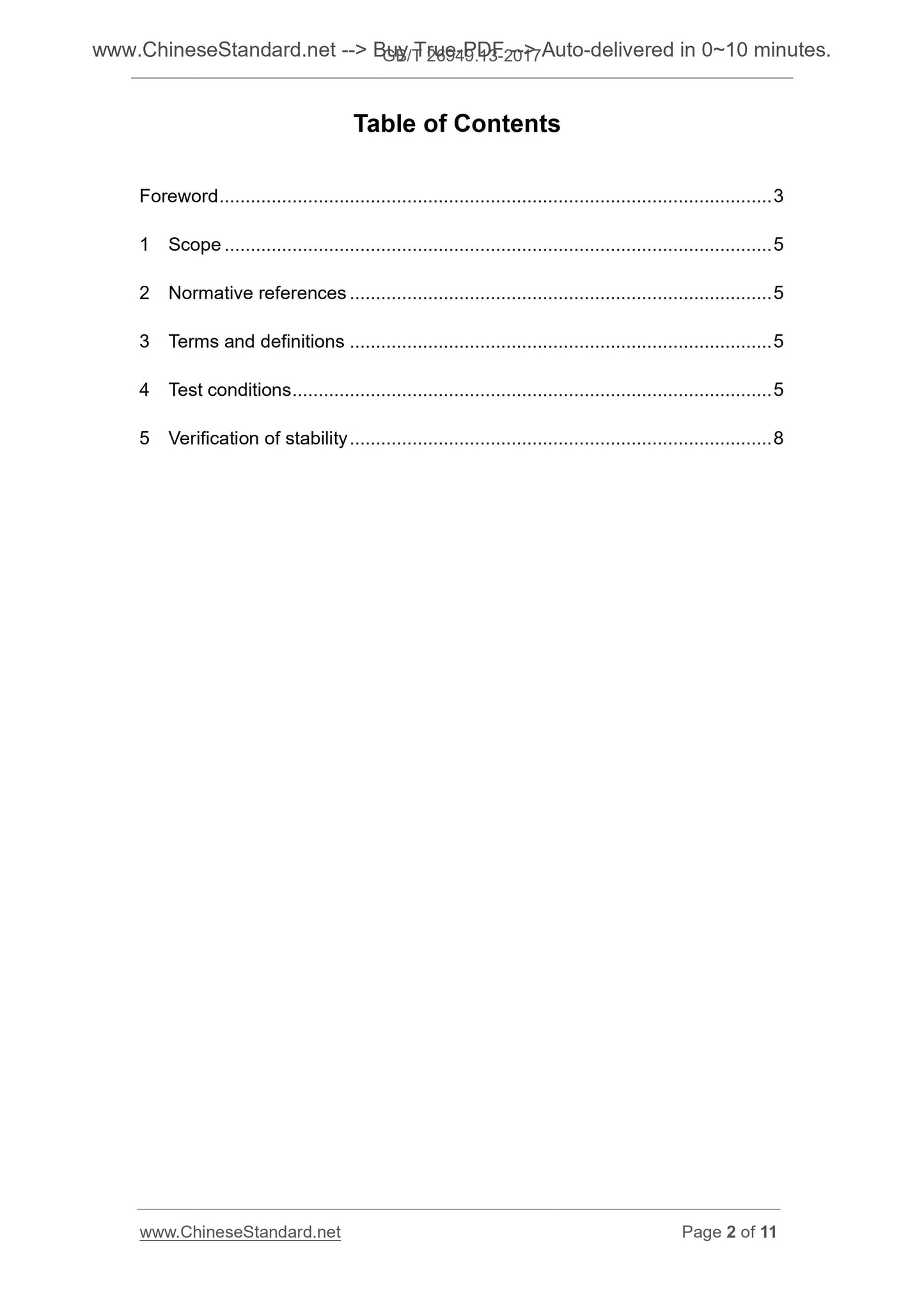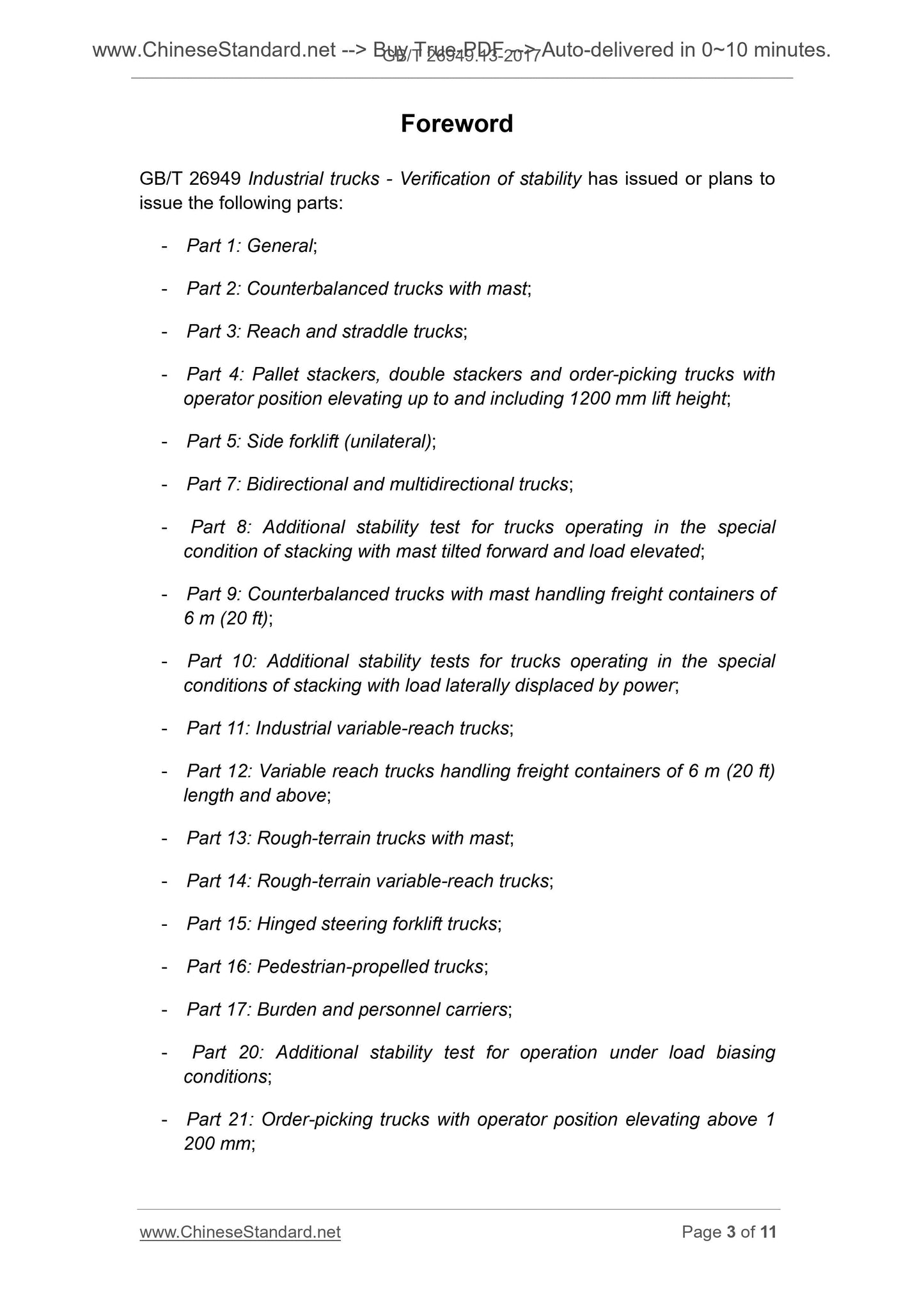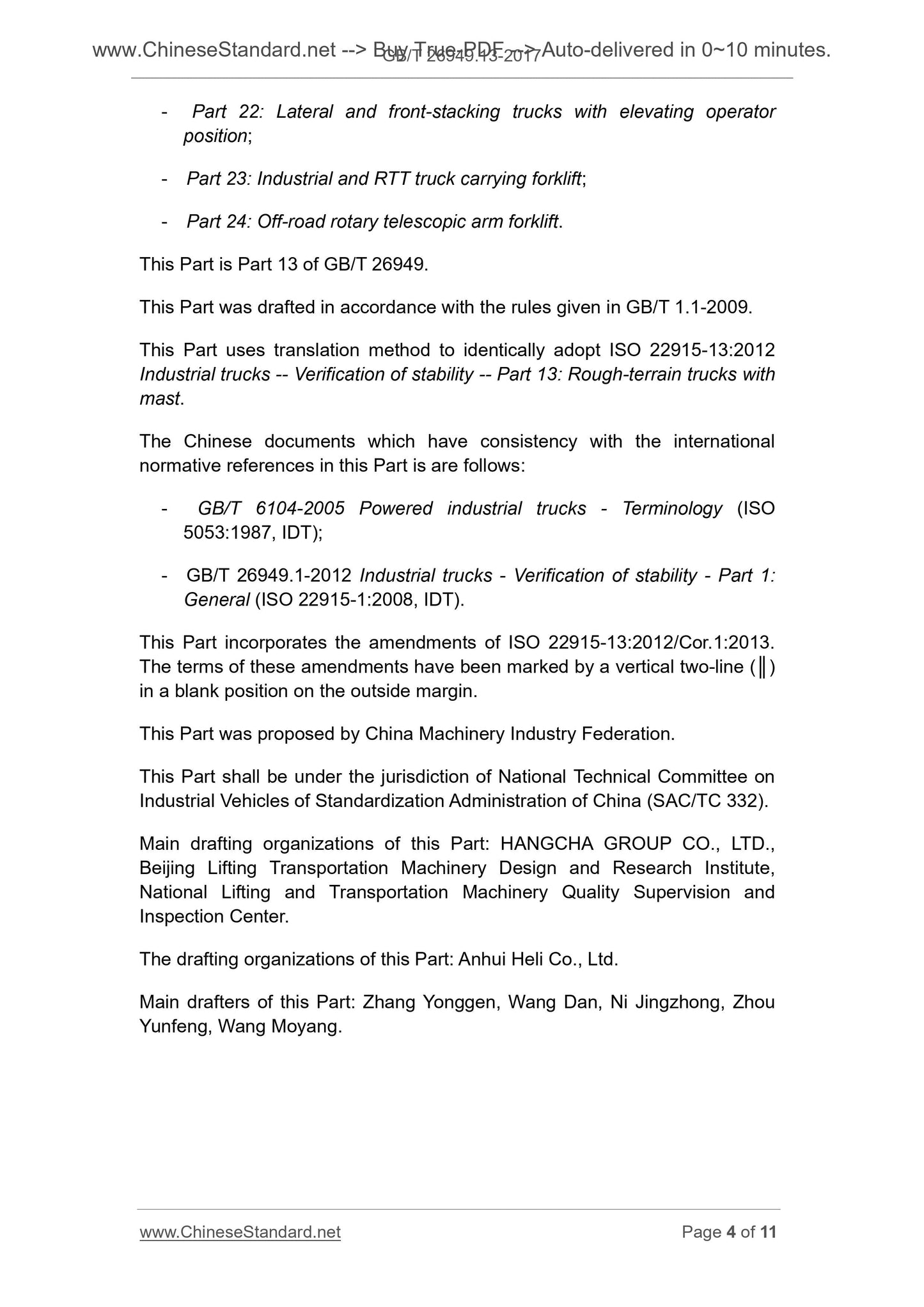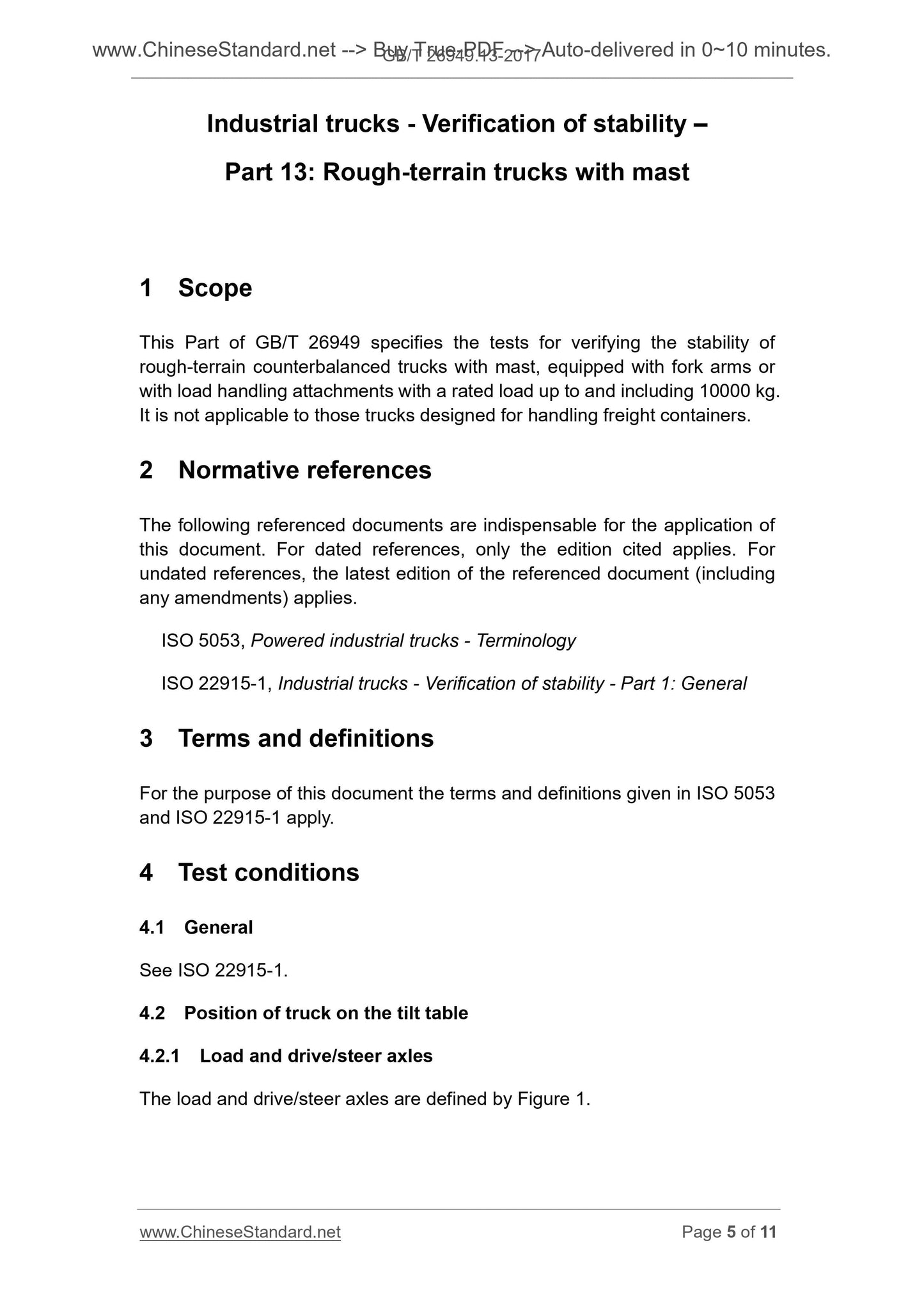1
/
of
5
www.ChineseStandard.us -- Field Test Asia Pte. Ltd.
GB/T 26949.13-2017 English PDF (GB/T26949.13-2017)
GB/T 26949.13-2017 English PDF (GB/T26949.13-2017)
Regular price
$90.00
Regular price
Sale price
$90.00
Unit price
/
per
Shipping calculated at checkout.
Couldn't load pickup availability
GB/T 26949.13-2017: Industrial trucks -- Verification of stability -- Part 13: Rough-terrain trucks with mast
Delivery: 9 seconds. Download (and Email) true-PDF + Invoice.Get Quotation: Click GB/T 26949.13-2017 (Self-service in 1-minute)
Newer / historical versions: GB/T 26949.13-2017
Preview True-PDF
Scope
This part of GB/T 26949 specifies that the rated lifting capacity of a gantry with a fork or load carrying is not more than 10,000 kgTest method for stability of off - road counterbalanced forklift truck.
This section does not apply to vehicles that carry freight containers.
Basic Data
| Standard ID | GB/T 26949.13-2017 (GB/T26949.13-2017) |
| Description (Translated English) | Industrial trucks -- Verification of stability -- Part 13: Rough-terrain trucks with mast |
| Sector / Industry | National Standard (Recommended) |
| Classification of Chinese Standard | J83 |
| Classification of International Standard | 53.060 |
| Word Count Estimation | 8,850 |
| Date of Issue | 2017-05-12 |
| Date of Implementation | 2017-12-01 |
| Quoted Standard | ISO 5053; ISO 22915-1 |
| Adopted Standard | ISO 22915-13-2012, IDT |
| Issuing agency(ies) | General Administration of Quality Supervision, Inspection and Quarantine of the People's Republic of China, Standardization Administration of the People's Republic of China |
| Summary | This standard specifies the test method for verifying the stability of the forklift with the rated lifting capacity of not more than 10 00 kg off-road type counterbalanced forklift. This standard does not apply to vehicles that carry freight containers. |
Share
